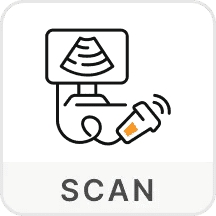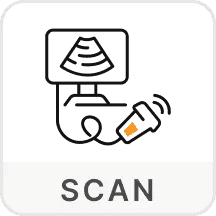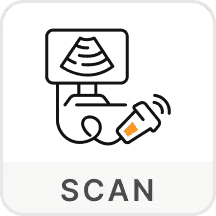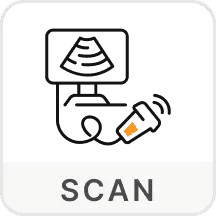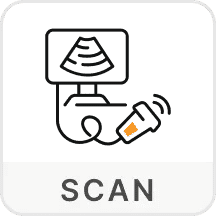near you Trusted by +
Patients Across India
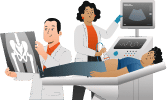
Mammography (6)
Starting from₹1381
Starting from₹1551
Starting from₹1854
Starting from₹2629
Starting from₹2629
Starting from₹3707
FAQs
How long does a mammography test take?
A mammography test typically takes 30-45 minutes for a screening mammogram. If you are undergoing a diagnostic mammography test, the process may take longer based on the number of images required. The procedure involves positioning the breast on the mammography machine and applying compression to obtain clear images.
What can I expect during a mammography test?
Before your mammography test, avoid applying deodorant, lotions, or perfumes to your underarms and breasts. At the diagnostic centre, you will be given a gown and asked to remove clothing from the waist up. The radiographer will position your breasts on the mammography machine and compress them between a plastic plate and a platform to capture detailed images.
What does a mammography report include?
A mammography test report provides a detailed analysis of any detected abnormalities, including masses, calcifications, or asymmetries. The results are categorised using the BI-RADS scale, ranging from 0 (inconclusive) to 6 (biopsy-proven malignancy). You will receive both the radiologist’s interpretation and mammogram images for further consultation.
Is a mammography test safe?
Yes, a mammography test is safe and exposes the breasts to low-dose radiation. The benefits of early detection of breast cancer outweigh the minimal risks associated with radiation exposure. Modern mammography machines are designed to minimise radiation levels while ensuring clear imaging.
Is a mammography test painful?
Some women may experience mild discomfort or pain due to the compression of the breasts during a mammography test. However, the discomfort is brief and lasts only for the duration of the imaging process. If the pain is excessive, inform the radiographer so adjustments can be made.
What is the mammography test cost?
The mammography test cost depends on factors such as location, the type of mammogram, and the diagnostic centre. In metro cities, the mammography test price for a screening mammogram is typically less, while a diagnostic mammogram may cost more. To find affordable options, search for "mammography test cost near me or mammography test price near me" or check with hospitals and diagnostic centres.
How long does it take to get mammography test results?
The mammography test results are usually available within a few days to a week. The radiologist will analyse the images and prepare a report. If any suspicious findings are present, additional imaging or tests may be recommended for further evaluation.
Can I eat or drink before a mammography test?
Yes, there are no dietary restrictions before a mammography test. You can eat and drink as usual. However, if you are pregnant or breastfeeding, inform the radiographer before the test.
Do I need a doctor’s referral for a mammography test?
A doctor's referral is not always necessary to book mammography test, but consulting a physician is recommended. Your doctor can assess your risk factors and advise on the best screening schedule. If you are searching for a nearby facility, look for "mammography test near me" for available centres.
How often should I get a mammography test?
The recommended frequency of mammography tests varies by age and risk level. In India, women aged 40-44 are advised to have a screening mammogram every year, while those aged 45-54 should have one every year or two. Women aged 55 and above can continue with biennial screening or switch to annual screening, depending on their doctor's recommendation and individual risk factors.

